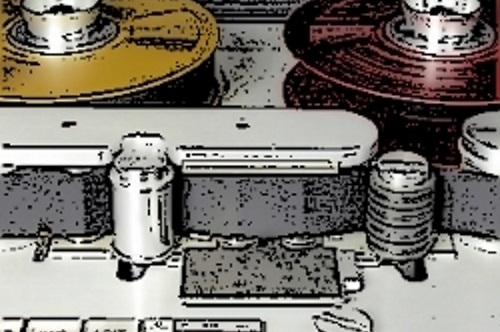I think everyone can agree that digital audio is here to stay. Even those who frowned upon digital in its earlier days have now mostly accepted its reality and have come to welcome its benefits.
Digital has quickly become the driving force behind most of the latest advancements in the field of audio engineering today. It has changed the workflows, the budgets and the music itself.
As a younger engineer I am very much a part of this digital age. My earliest experiments in audio were mostly on computers. I have had little professional work with analog formats other than the occasional transfer and/or restoration.
I take for granted (like most others) the speed and flexibility of digital. I even find myself complaining about how many clicks it takes to complete something that used to take hours with analog tape.
In short, I have been spoiled by digital, and so have most budding engineers today.

Almost all audio sources are analog (AC electrical currents) before they become ones and zeros on a hard drive, and almost all digital technologies are based upon, or even directly emulate, their analog equivalents. My training in analog technology at The Omega Studios’ School has become the foundation upon which I have constructed my digital repertoire.
In school, I recorded to analog tape long before I even touched Pro Tools, and a tape machine is a fairly simple device compared to the modern Digital Audio Workstation (DAW). A tape machine has only two jobs really, record and playback, and learning how to get good sounds to such a simple and comparatively limited device before knowing all the possibilities of a digital environment forces one to focus on what matters most, the source.
I have heard it again and again from top engineers and mentors of mine. It’s all about the source. Does the instrument sound as good as possible when you’re standing in front of it in the room? If not, what can be done to improve it (tuning, new strings, some gaffers tape, whatever it takes). After that, you then start moving things or swapping microphones. It is only once you have exhausted these physical efforts, that you move on to processing in order to correct or sweeten a sound.
When a DAW is on a screen in front of you it is quite hard to ignore its “magic tricks.” Realizing the power of digital can distract you from the fundamentals of sound and acoustics. When so many “fixes” are just a mouse click away, it is very tempting to ignore the root of the problem. Even bands these days will accept a “less than great” take simply because they know you have your magic toolbox in the control room. So many artists and engineers are just simply getting lazy.
Analog tape, however, takes away many of those magic tricks. Even the tricks that are still available to you are often much more time consuming, so engineers think twice before resorting to them. There is more incentive to go to the source or record another take because the alternative is often much more of a headache. DAW’s have nourished the “fix-it-in-mix” mentality, especially inherent in those who began by learning in this digital “magic” rich environment.
I have seen young audio engineers who are faster at Pro Tools than even some of the top engineers in our field, and while that skill set may be important in these days of digital, it’s not what great engineers are made of. Knowing how to use a DAW and knowing how to get great sounds into DAW are two very different things.
I have not forgotten the analog training that I received in school at Omega Studios or its continued effect on my abilities as an engineer. Far too many audio engineering students are beginning their education in the DAW environment and are not focusing long enough on the concepts that matter most.
Starting a student’s education on analog tape forces them to focus on these core concepts. While these concepts can, of course, be taught with a DAW, the feature rich and graphically appealing environment of a DAW will all too often act as a distraction.
In short, get back to basics.




















